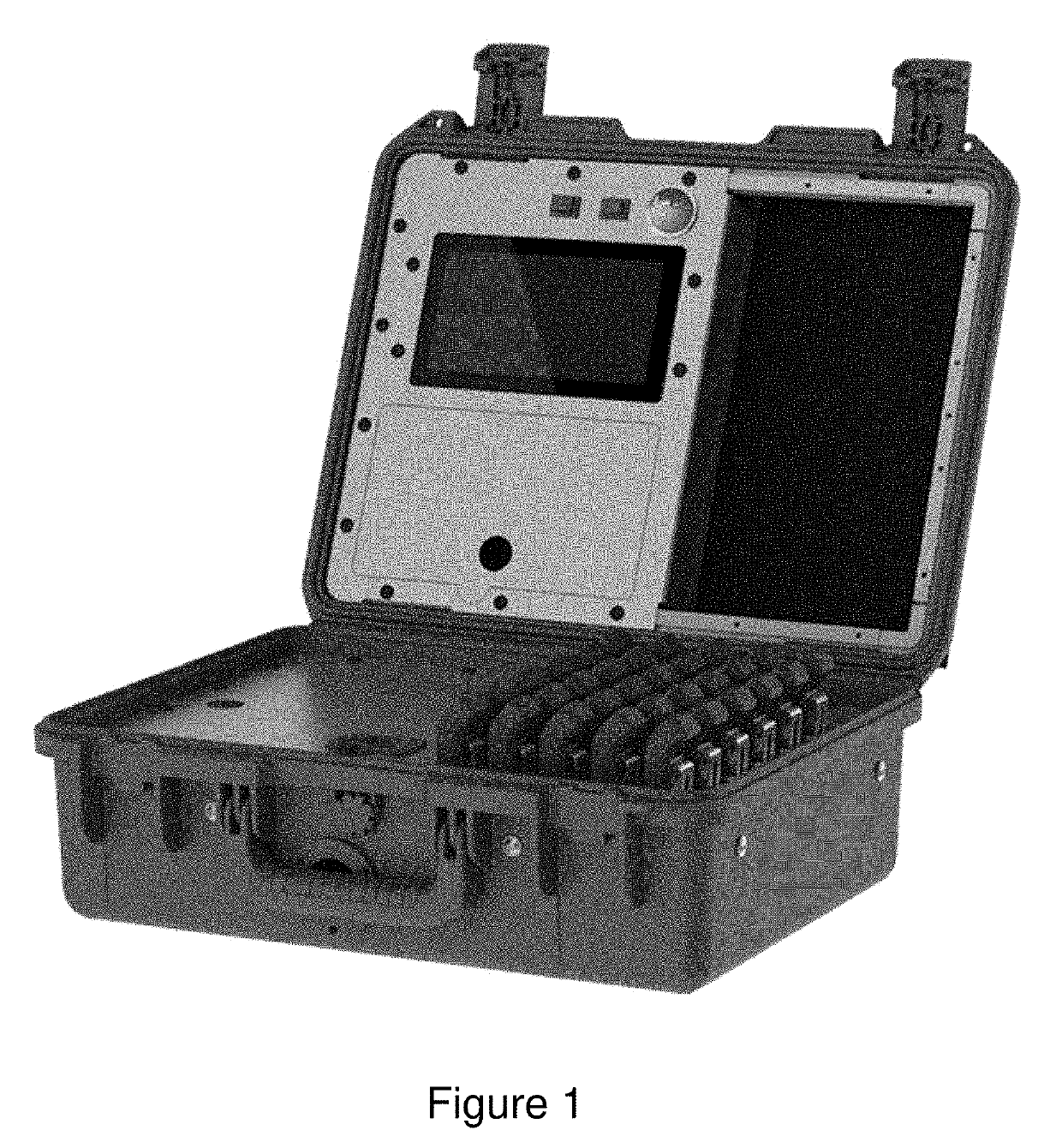Further, in some environments, the hardware is subject to differences, and may require
programming for the location or venue in which it is intended to operate.
Due to the centralized network-based distribution models for modern smartphone applications (e.g., iOS
App Store & Google Play Stores), having up-to-date and broadly accessible smartphone applications is a challenge when
network connectivity cannot be assured, because regular users either do not know
specialty procedures for off-network app distribution, or are simply unprepared with the proper permissions and files to do so when needed.
This challenge is compounded by the fact that usually when emergency apps are needed most, like during natural disasters, is precisely when
network connectivity is most likely to be unavailable leading to compromised ability to respond as many users may not have up-to-date apps or may have not installed the appropriate apps at all beforehand.
This reliance on individual users always being prepared with proper applications before an emergency is a critical
vulnerability for effective off-grid smartphone-based emergency operations.
As
mobile phone applications are usually quite large, often averaging over 50 MB, and perhaps more if mapping data is included, even if some resilient
connectivity might be available, such as a
satellite communications (sitcom) link, it is completely unreasonable from a bandwidth and cost perspective to download an app from the
regular network.
Thus, the common availability of downloadable applications for smartphones when Internet or other
wide area networking communications are presumed to be impaired, is an unsolved problem.
After core applications are installed / updated, they are often in a vanilla “fresh install” mode, which may not allow full operation.
Outside of fully networked devices like smartphones and other general computing devices, the challenge in upgrading standalone
electronics that are not fully networked, like off-grid radios or
laser range-finders for example, primarily lie in the difficulty in delivering
firmware upgrade files to a hardware device safely and reliably.
Due to these challenges, as well as the general lack of knowledge by the public on the general topic of
firmware in general, it is very common for
electronic hardware devices to never have their critical software upgraded from whatever stock files were installed during manufacturing.
This is very problematic as critical bug fixes and performance enhancements can be missed, or in more serious cases, can lead to compatibility breaking fragmentation of
electronics that might be expected to work together in some way.
Further, many modern firmware updates are distributed via the cloud for networked and semi-networked devices, and if that cloud is gone (temporarily unavailable, or server disabled), there is usually no way to
upgrade the firmware on a device off-grid unless there is some method / process to deliver new firmware files locally.
Another issue for group communications is common availability of hardware.
While in some cases,
industry standard hardware, such as WiFi (IEEE 802.11 type) transceivers may be used to communicate in an ad hoc network, and thus users may be expected to supply their own hardware, the use of commonly available hardware according to industry standards limits the available types of communications.
In particular, WiFi radios tend to have limited range, and this range may be intentionally limited in order to assure
frequency reuse in adjacent regions.
While WiFi MANETs are known, their application is limited, and long-range communications are difficult to reliably achieve.
Therefore, when seeking to deploy a MANET in a new location or venue, such as for use by a number of emergency responders, groups, etc., the logistics of initial setup may be complex or difficult, and remain an unsolved problem.
Normally these permissions / settings are downloaded from a
cloud server, but with a network unavailable, this app and many others would be rendered either completely or near useless.
Thus, while MANETs are known, and provide useful functions, the level of skill required for normal users to successfully deploy and operate a MANET is high, and the risks during deployment are significant.
 Login to View More
Login to View More  Login to View More
Login to View More 
